Smartphones have become an irresistible part of our lives. Mobile apps are the soul of smartphones, and without them, they are of no use. In present times, it’s hard to run a business relying upon a website only. Because of technological advancement, the market trends introduce a new gamut of mobile apps now and then. The whole evolution of Mobile application development has become the powerhouse of business growth.
According to the reports, mobile applications have developed to generate $693 billion in revenue via app stores and in-app advertising in 2021. To make your business more viable, it’s time to take advantage of the growing popularity of Mobile application development. Most of the companies are unaware of the correct process and use of Mobile application development. Here, we are going to give you a deep dive into the concept of Mobile application development.
What is Mobile Application Development?
The set of processes and procedures involved in developing software for small, wireless computing devices, such as smartphones and other hand-held devices, is referred to as mobile application development. Mobile app development, like web application development, has its roots in traditional software development models. Mobile apps, on the other hand, are widely installed to take advantage of the unique characteristics of a particular mobile device.
Platforms for Mobile Application Development

Presently, the two of the most popular smartphone platforms are Apple’s IOS and Google’s Android. Apple phones and tablets come preinstalled with vital apps, including a functional web browser and accessibility to the apple app store. Similarly, in android smartphones, some applications come pre-installed, and you can install more from the google play store.
Although there are some similarities to build applications for the two most bustling platforms. IOS development vs. Android Development requires different software development kits (SDKs) and toolchains. While Apple uses iOS exclusively for its own devices, Google makes Android available to other organizations if they fulfill certain requirements, such as shipping devices with particular Google applications. Targeting both of these platforms allows designers to build apps for hundreds of millions of devices.
Process of Mobile Application Development
- Develop a strategy
- Determine who is using the app.
- Examine the competition.
- Establish the app’s objectives and aims.
- Choose a mobile platform for your application.
- Planning and Analysis
- UI/UX Designing
- Mobile App Development
-
Technology for the Back-End/Server
This section contains database and server-side objects required for your mobile app’s supporting functions. If you’re utilizing an existing back-end platform, you may need to make some changes to offer the necessary mobile capabilities.
-
API (Application Programming Interface)
An API (Application Programming Interface) is a means for communication between the app and a back-end server/database.
-
Front-end mobile app
The front end is the mobile app that the end-user uses. Mobile apps usually consist of interactive user experiences using an API and a back-end for data management. In certain situations, the Application may use local data storage if a user operates an app without Internet connectivity.
When each development milestone is accomplished, it is forwarded to the validation team.
- Testing
- Support
- Title of your app
- Description
- Keywords
- Category
- Screenshots
- Launch Icon of the app store

The plan for turning your idea into a successful app is defined in the first step of the mobile app development process. You might want to make this a bigger part of your entire company mobility strategy. Because the goals of each app differ, the mobility strategy has an app-specific impact that must be addressed during the development process. This stage includes the following steps:
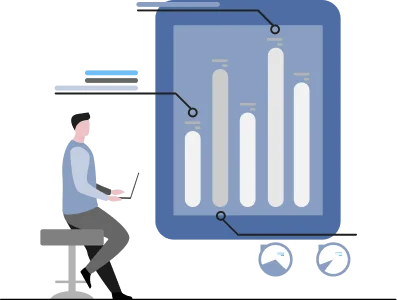
At this point, your app concept begins to take shape and develop into a working product. The first step of the analysis and planning process is defining use cases and documenting specific functional requirements. You need to prepare a product plan after determining your app’s requirements. This involves prioritizing and organizing mobile app needs into delivery milestones. If you’re short on time, resources, or money, establish your minimum viable product (MVP) and prioritize it for the first launch.
Identifying the talents required for your app development endeavor is a part of the planning process. Mobile platforms such as iOS and Android, for example, employ various development methods.
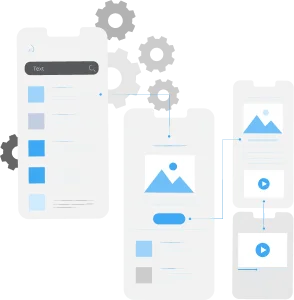
The user interface (UI) and user experience design (UX) are two critical aspects of any mobile app design process. A solid UI focuses on the aesthetics of an app, but UX design addresses many elements of human contact with the app, such as branding, usability, function, and so on. This stage has several components, which will be described further below. The purpose of a user journey map is to depict the user’s experience. This journey map should be created by your development team to show the user flow through your mobile application. It aids in the creation of an app UI with few features.
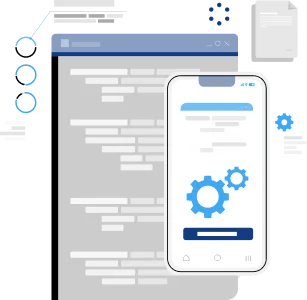
App Development Planning is still an important component of the mobile app development process. Before you begin real development/programming activities, you must establish the technical architecture, select a technology stack, and specify development milestones. Back-end/server technologies, API(s), and the mobile app front-end are all essential components of a typical mobile app project.

A comprehensive quality assurance (QA) test throughout the mobile app development process stabilizes, uses, and makes applications safe. You first have to develop test cases covering all areas of the application test, to provide a complete QA test of your app.
Like the way cases drive the creation of a mobile application, mobile app trials are driven by test cases. For tests, test results for evaluating software quality, and monitoring corrections for tests are recorded. Your QA Team participates in the analysis and design phases as a best practice strategy.

The publication of a native mobile app needs your software to be submitted into app stores, iOS applications Apple App Store and Android Apps Google Play. However, before you publish your mobile app you need a developer account with the Apple App Store and Google Play Store. A publication of an app in the app store involves metadata preparation including:
Once uploaded in the Apple App Store, iOS apps undergo a review procedure that can take between a few days and several weeks depending on the app quality and how close the iOS development requirements for Apple are to be applied.
Alternatives for building mobile Apps
The publication of a native mobile
app needs your software to be submitted into app stores, iOS
applications Apple App Store and Android Apps Google Play. However,
before you publish your mobile app you need a developer account with the
Apple App Store and Google Play Store.
A publication of an app in the app store involves metadata preparation
including:
- Native Mobile Application Development
- Cross-Platform Applications
- Hybrid App Development
- Progressive Web Applications

Native mobile apps can default access to built-in smartphone capabilities like the camera and microphone. Contrary to web pages and web apps, the browser does not include native mobile apps. You need to download them from the Apple App Store and Google Play platform-specific app stores. You may access each application after installation by touching on the device’s screen with their appropriate icons.
| Pros | Cons |
|---|---|
| Better Performance | Higher Cost of building such apps |
| Consistent look and feel | Multiple code basis for each platform |
| Access to new features | Platform specific |
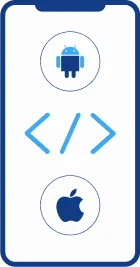
The “cross-platform mobile app development” speaks to itself: a mobile solution compatible with multiple operating systems and platforms may be developed by developers concurrently. The cross-platform mobile native apps have been authored in many languages and frameworks but built directly on the device’s operating system into a native application.
| Pros | Cons |
|---|---|
| Sharable code | Limited Functionality |
| Wider Audience | Delay in updates |
| Cost- Effective | Poor designing |
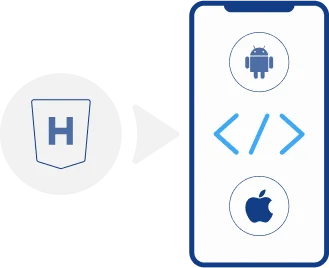
Hybrid apps are a ‘web container’ that allows you to run your browser and connect to native device APIs through Apache Cordova. JavaScript, CSS, and HTML5 are integrated as application installation packages as standard web technologies for hybrid mobile apps. This enables the app to work on the embedded browser of every platform in place of the web browser, allowing it to be installed and sold in app stores as well as on ordinary native apps.
| Pros | Cons |
|---|---|
| Easy to scale on another platform | Long wait for new features |
| Fast build time | Slow Performance |
| Offline Availability | Lack 3D support |

PWA offers an alternate method for the development of traditional mobile apps through the distribution of app shops and applications. PWAs are Web-based apps that leverage several browser characteristics to create an “app-like” user experience, such as the offline functioning and the background process and linking to the device screen. Today, PWA offers a powerful combination of a website and a mobile application. A PWA may be utilized as a mobile app and as a website on all devices with a single solution.
| Pros | Cons |
|---|---|
| Features of web and app | Average performance |
| No installation required | No access to app stores |
| Supports SEO and strong performance | Fewer functionality |
Conclusion
The mobile app development technology changes at a speedy rate and is an active expanding industry in the world app market. Indeed, mobile applications have been driven by technologies and trends. Today companies have much to gain from the newest trends in mobile apps. It is all due to the capacity of technology to increase mobile apps. Because of that, Mobile application development has become a need of an hour. Mobile application development is a continuous process and will continue with user input and new functionality after the first launch. Motionray Operations is a leading mobile application development company. For a long time, Motionray has been following the market trends and has developed the best trending apps for companies across finance, healthcare, real-estate, customer products, logistics, and many more. Along with development, we ensure the successful launch of the mobile applications.






